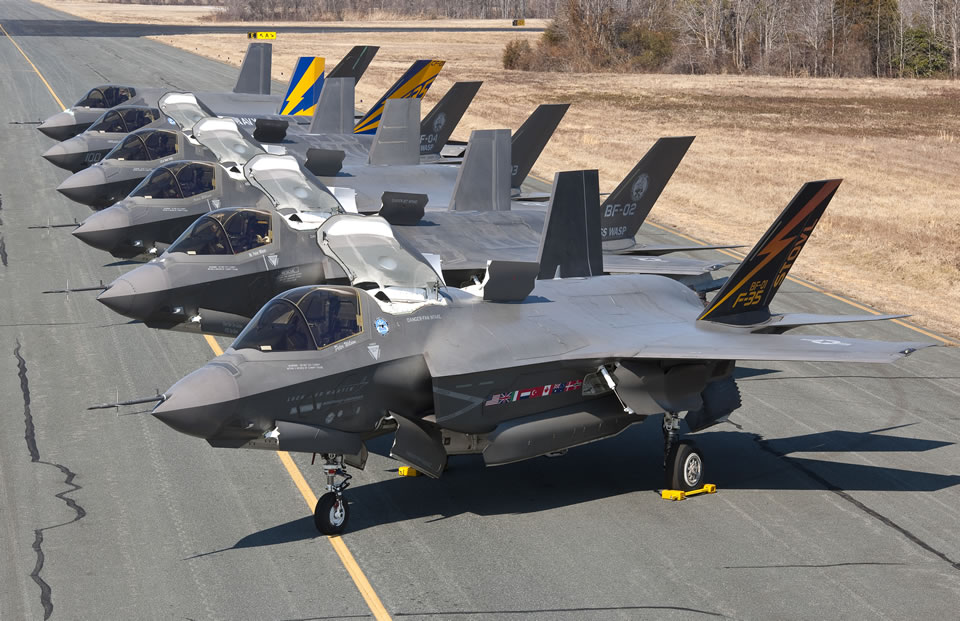Late in 2012, US Secretary of Defense Leon Panetta revealed in public comments that the United States intended to send the first overseas contingent of F-35B Lightning IIs to the Marine Corps Air Station (MCAS) at Iwakuni, Japan located in Yamaguchi Prefecture on the southeastern coast of the archipelago’s main island of Honshu. Secretary Panetta stated that this move will go far in strengthening America’s security posture in the Asia-Pacific region and will represent the first operational overseas deployment of the controversial stealth fighter. The aircraft are scheduled to arrive in Japan by 2017.
The US Marine’s F-35B Short Take-off and Vertical Landing (STOVL) version of the Lightning II is designed to meet the unique needs of US Navy and Marine amphibious assault operations. Deploying the Joint Strike Fighter (JSF) to forward-based units in the Pacific is in keeping with the Obama administration’s “Asia-Pacific pivot.” This pivot entails relocating the bulk of US forces to the Pacific region to reinforce America’s presence in the area. The revised defense policy places the greatest emphasis on protecting maritime trade routes and strengthening stability in the Asian-Pacific area, a region of the world most defense and economic analysts agree represents a relatively untapped market of immense growth potential.
China’s surprising advances in military technology and a significant growth in the size and capabilities of Chinese military forces coupled with North Korea’s unexpected proficiency in missile and rocket technology have reinforced America’s determination to focus more attention on the region of the world with the greatest potential for economic growth.
On 10 January, the United States notified Japan that it intends to begin deploying an initial contingent of ten US Air Force CV-22 tiltrotor Osprey transports to the Kadena Air Force Base on the southernmost island of Okinawa in about two years.
Japanese groups opposed to the presence of US military forces on the island of Okinawa staged mass demonstrations in September and October of 2012 to protest the basing of a Marine Corps squadron of twelve MV-22B Ospreys at MCAS Futenma that is located very near the Okinawan urban center of Ginowan City. The Marine squadron became fully operational in December and a second squadron of twelve aircraft is due to arrive in mid-2013 as additional replacements for the Corps’ fleet of Vietnam-era CH-46 Sea Knights. When counting the twelve Marine MV-22B Ospreys currently stationed at MCAS Futenma and the additional squadron of twelve due to arrive in mid-2013 and the ten USAF CV-22s tentatively scheduled for arrival sometime in 2015, Okinawa will become home to a total of thirty-four or more Ospreys making the island host to the largest concentration of the tiltrotor aircraft in the Pacific.
When notified of the deployment plans during a briefing in Washington, Susumu Matayoshi representing the governor of Okinawa, flatly stated that the Okinawa Prefectural government could not possibly agree with such plans and would mount a determined protest to prevent the stationing of more Ospreys on the island. Following the meetings with Mr. Matayoshi, Department of Defense (DoD) press secretary George Little issued a public statement indicating that the Pentagon was evaluating numerous basing options as part of a continuous planning process intended to balance the military build-up in the Pacific. He stated that the possible deployment of USAF CV-22s to the Pacific is still years away and that “no construction has begun to support such a deployment.”
On 28 July 2012, eight United States Air Force (USAF) F-22 Raptor stealth fighters were stationed at Kadena Air Force Base to further bolster America’s aerial combat capabilities in the Pacific. The arrival of the F-22s met with no protests from local citizens.




















